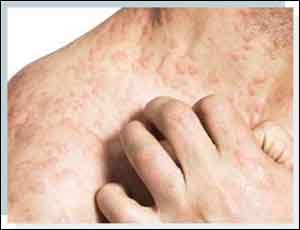- Home
- Editorial
- News
- Practice Guidelines
- Anesthesiology Guidelines
- Cancer Guidelines
- Cardiac Sciences Guidelines
- Critical Care Guidelines
- Dentistry Guidelines
- Dermatology Guidelines
- Diabetes and Endo Guidelines
- Diagnostics Guidelines
- ENT Guidelines
- Featured Practice Guidelines
- Gastroenterology Guidelines
- Geriatrics Guidelines
- Medicine Guidelines
- Nephrology Guidelines
- Neurosciences Guidelines
- Obs and Gynae Guidelines
- Ophthalmology Guidelines
- Orthopaedics Guidelines
- Paediatrics Guidelines
- Psychiatry Guidelines
- Pulmonology Guidelines
- Radiology Guidelines
- Surgery Guidelines
- Urology Guidelines
2018 Guidelines on generalised pruritus by British Association of Dermatologists

This British Association of Dermatologists has released guidelines on management of generalised pruritus that does not have underlying dermatosis.
The guidelines mainly focus on :
- investigation and interventions for secondary generalised pruritus
- treatment of GPUO
- management in primary care
- economic considerations
- recommended audit points.
Key Recommendations:
- Full blood count and ferritin levels should be checked in all patients with chronic GPWOR
- Liver functions tests should be considered for patients with generalized pruritus associated with iron overload
- Patients with generalized pruritus with suspicion of haematological involvement should have initial investigations including full blood count, blood film, lactate dehydrogenase and ESR (if available). Immunoglobulins and urinary paraproteins may also be requested but will have a low yield, as myeloma is rarely associated with GPWOR
- Patients with generalized pruritus associated with either PV or suspected Hodgkin lymphoma should be referred to haematology.
- Patients with generalized pruritus with suspicion of PV (raised haemoglobin or haematocrit) should have blood samples sent for JAK2 V617F mutation analysis and/or be referred to haematology.
- In the absence of JAK2 mutation, secondary causes of PV should be investigated by means of clinical assessment, renal and liver function tests, serum erythropoietin level, measurement of oxygen saturation, chest Xray and abdominal ultrasound.
- Patients with generalized pruritus associated with lymphoma may have their itch resolved by treatment with cimetidine, gabapentin, carbamazepine, mirtazapine or phototherapy.
- Patients with generalized pruritus associated with incurable lymphoma may have their itch relieved with oral corticosteroids.
- Patients with generalized pruritus associated with PV may have their itch relieved with cytoreductive therapy, aspirin, interferon-a, SSRIs, PUVA, UVB phototherapy, cimetidine or atenolol.
Treatment of generalized pruritus of unknown origin
Local
- Patients with GPUO may be prescribed topical doxepin. Treatment should be limited to 8 days, 10% of body surface area and 12 g daily.
- Patients with GPUO may benefit from topical clobetasone butyrate or menthol.
- Patients with GPUO should not use crotamiton cream .
- Patients with GPUO should not use topical capsaicin or calamine lotion.
Systemic-
- In patients with generalized pruritus no one therapy has been found to be effective and safe. Consider the following to relieve itch: ○ nonsedative antihistamines such as fexofenadine 180 mg, loratadine 10 mg or mildly sedative agents such as cetirizine 10 mg before sedative antihistamines
- paroxetine, fluvoxamine, mirtazapine, naltrexone, butorphanol, gabapentin, pregabalin, ondansetron or aprepitan
- H1 and H2 antagonists in combination, for example fexofenadine and cimetidine.
- sedative antihistamines in the short-term or palliative setting, for example hydroxyzine
Phototherapy in generalized pruritus without rash
- BB-UVB is an effective treatment for many patients with uraemic pruritus
- Patients with pruritus associated with Hodgkin disease may benefit from BB-UVB for temporary relief from itch.
- Patients with pruritus associated with NHL may benefit from NB-UVB for temporary relief from itch.
- Patients with pruritus associated with PV may benefit from NB-UVB, BB-UVB, PUVA or PUVA in combination with sunlight to relieve an itch, although relapse is common after stopping treatment.
- Patients with aquagenic pruritus may benefit from NBUVB, BB-UVB or combined UVA and UVB to relieve an itch.
- Patients with cholestatic pruritus may benefit from BBUVB or combined UVA and UVB to relieve an itch.
- Patients with HIV-associated pruritus may benefit from UVB phototherapy.
For further reference log on to: https://doi.org/10.1111/bjd.16117
British Association of Dermatologistsgeneralisedgeneralised pruritusGPUOinvestigationmanagementpruritispruritustreatmentunknown origin
Next Story
NO DATA FOUND

Disclaimer: This site is primarily intended for healthcare professionals. Any content/information on this website does not replace the advice of medical and/or health professionals and should not be construed as medical/diagnostic advice/endorsement or prescription. Use of this site is subject to our terms of use, privacy policy, advertisement policy. © 2020 Minerva Medical Treatment Pvt Ltd